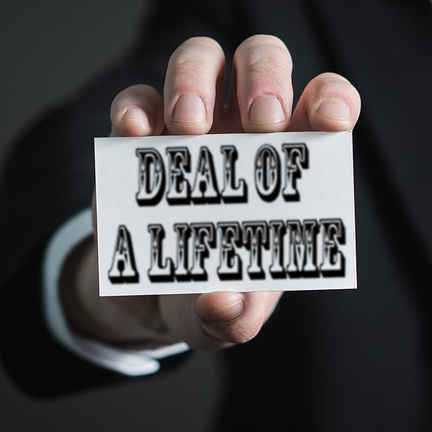Aug
27

Popular movies like American Hustle, Dirty Rotten Scoundrels, The Sting, and Catch Me If You Can show that audiences like a good con artist story. The films even manipulate—con?—us into rooting for the bad guy, our consciences somehow assuaged by marks who deserve or at least can afford the loss.

The deserving-mark trope entertains, but in real life cons hurt people. Moreover, many of the classic cons of history have not gone, but simply changed clothes and reappeared.
Convention demands beginning with a look at the infamous Brooklyn Bridge. “I have a bridge to sell you” is no mere cliché. Many people have “purchased” the Brooklyn and other bridges, bumping up against hard reality only when forced to take down their newly constructed tollbooths. The most famous of the Brooklyn Bridge sellers was George C. Parker, who in the late 19th century targeted immigrants filled with the hopes and promises of the American dream—and took them for their life savings.
Capone, counts, and grateful millionaires
Perhaps more audacious was “Count” Victor Lustig, whom Smithsonian magazine dubbed “America’s greatest con man.” He twice got away with alleging the Eiffel Tower was due for demolition and selling it as scrap metal to the highest bidder. In the U.S., he sold machines purported to turn paper into currency. He even conned $5,000 from none other than Al Capone.
In 1881, French peasant Thérèse Dauignac Humbert was in the right time and the right place to revive American millionaire Robert Henry Crawford from a heart attack. Two years later, Crawford thanked her by willing her a safe containing $20 million. Crawford’s nephews lost no time in contesting the will, persuading a judge to seal the safe pending litigation. With a sealed safe for evidence and its contents for collateral, high society welcomed Humbert and favored her with numerous, hefty loans. The safe was finally opened in 1902. According to Jay Robert Nash in his book Hustlers and Con Men, inside were negotiable bonds worth $1,000, an empty jewel box, and some brass buttons. There never was a Robert Henry Crawford. His “nephews” were in reality Humbert’s brothers. “A dozen Humbert creditors committed suicide the next day,” Nash wrote. As for Humbert and her brothers, they received only “short jail terms.” Echoes of the sealed safe ruse can be found today in loans made by trusting individuals reassured by promises of repayment “as soon as my next deal goes through.”
Three-Card Monte, a centuries-old and illegal scam, still goes on. You need only walk the streets of New York or other major cities to find clandestine games suckering marks.
Nigerian money scams: ridiculous for a reason
A modern iteration of the Spanish prisoner game is found in Nigerian money scams, which NPR reported are “ridiculous for a reason”:
“It’s actually a brilliant strategy designed to save time and maximize profit by immediately identifying only the most gullible marks, according to an analysis by Cormac Herley of Microsoft Research.”
Indeed, in Herley’s abstract we find:
… tales of fabulous amounts of money and West African corruption will strike all but the most gullible as bizarre … It won’t be pursued by anyone who consults sensible family or friends, or who reads any of the advice banks and money transfer agencies make available. Those who remain are the scammers’ ideal targets.
Had you been around in 1890, you might have received a letter out-and-out offering to sell you counterfeit money, sometimes called the Green Goods game. To assure readers of quality fakes, one sender wrote …
“… it would be perfectly foolish to send out poor work, and it would not only get my customers into trouble, but would break up my business and ruin me.”
I knew someone whose family fell for a modern version of the Green Goods game—despite his experience in financial services. For cents on the dollar, they purchased allegedly stolen, dye-bombed currency. Included “at no extra charge” was a dye-removal solution. Of course neither was delivered. It hadn’t occurred to the marks to ask why the seller didn’t keep and clean the currency for himself.
Readers have doubtless heard of the Ponzi scheme, which generally uses later investors’ funds to pay high rates of return to earlier investors. Charles Ponzi didn’t invent it but made it famous. He died in 1949, but his scheme still pops up. More famous that Ponzi himself is Bernie Madoff …
… the former non-executive chairman of the NASDAQ stock market, and the confessed operator of the largest Ponzi scheme in world history, and the largest financial fraud in U.S. history. Prosecutors estimated the size of the fraud to be $64.8 billion, based on the amounts in the accounts of Madoff’s 4,800 clients as of November 30, 2008.
Legal cons
Sadly, not all scams are illegal. Most drug stores carry preparations claiming to cure a host of maladies despite bearing the government-required disclaimer, “This product is not intended to diagnose, treat, cure, or prevent any disease.” The disclaimer is there for a reason, namely, that the preparations have not been demonstrated to do what purveyors claim. Unfortunately, that doesn’t seem to hamper sales.
Pyramid schemes—which pay enrollees for duping people into enrolling after them—are strictly illegal, yet they persist legally under innocuous-sounding names like “multi-level” or “network” marketing. They are legal because tangible products are involved. The problem is the open secret that the real money to be made is not in selling products but in enrolling more members, essentially a legal pyramid scheme. Science writer Brian Dunning has pointed out that the hope is unattainable:
Of all the thousands of network marketing plans available now or in the past, if only one of them had ever had even a single line active to only 14 levels deep, that alone would have required the participation of more human beings than exist.
Moreover, Dunning writes,
On average, 99.95% of network marketers lose money. However, only 97.14% of Las Vegas gamblers lose money by placing everything on a single number at roulette.
The old adage “… if it seems too good to be true …” will always apply. Sadly, whether due to being over-trusting or to an avarice-based willingness to push the boundaries of ethics and law, there will always be people who ignore the adage.